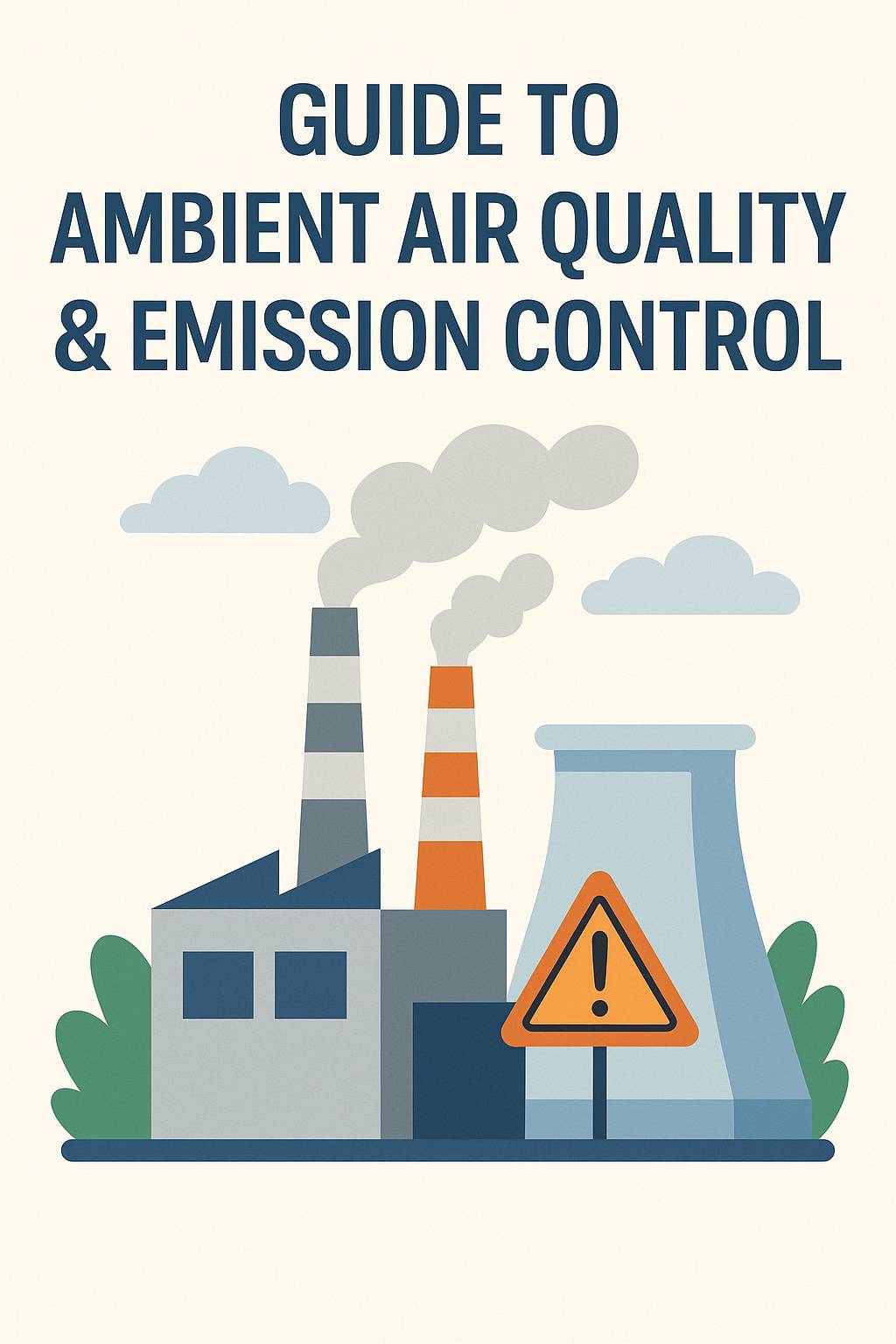Maintaining clean air is one of the most important responsibilities for industries today. With growing global concerns about climate change, pollution, and sustainability, businesses are expected to manage their emissions responsibly.
This guide explains what ambient air quality is, why emission control matters, and how companies can adopt practical solutions to protect the environment while staying compliant with international benchmarks.
What Is Ambient Air Quality?
Ambient air quality refers to the condition of the air in the surrounding environment — the air we breathe every day. Poor air quality caused by industrial emissions, vehicle exhaust, and chemical pollutants can harm public health and ecosystems.
Managing air quality is not just about following rules. It’s about:
- Protecting employees and local communities
- Reducing environmental impact
- Building a reputation as a responsible and sustainable business
Who Needs to Manage Emissions?
Emission control applies to all types of industrial facilities, but especially to:
- New Plants or Factories: Modern facilities should be designed with advanced emission control systems from the start. This reduces future compliance costs and ensures sustainability.
- Upgraded or Modified Facilities: When a plant undergoes modifications, it’s a chance to integrate better technologies that reduce emissions and improve efficiency.
👉 Note: Emissions that are not released into the air (like gases injected underground) are generally not a concern for air quality.
Best Practices for Emission Control
To keep the air clean, businesses can adopt proven strategies and technologies:
- Use Advanced Control Technologies
- BACT (Best Available Control Technology): For new facilities — using the most effective methods to cut emissions.
- BART (Best Available Retrofit Technology): For existing facilities — upgrading systems to reduce pollution.
- Target Key Pollutants
Focus on reducing:- Nitrogen Oxides (NOx) – harmful to lungs and a contributor to smog.
- Sulfur Dioxide (SO₂) – causes acid rain and respiratory issues.
- Volatile Organic Compounds (VOCs) – linked to smog and long-term health risks.
- Monitoring and Testing
- Air dispersion modeling helps predict how pollutants will spread.
- Continuous emission monitoring tracks performance in real time.
Why It Matters: Benefits Beyond Compliance
Emission control is not just about avoiding penalties — it brings real benefits:
For Businesses
- Lower long-term operational costs through energy efficiency
- Stronger brand image and customer trust
- Easier compliance with global trade and export regulations
For Communities
- Cleaner air improves public health and quality of life
- Reduced risk of respiratory diseases
- Long-term environmental sustainability
How Global Standards Help
International frameworks like the U.S. Environmental Protection Agency (USEPA) Code of Federal Regulations (CFR) Title 40, Parts 60–63 provide guidance on testing, monitoring, and controlling emissions.
By aligning with these global practices, industries ensure they are not only meeting local rules but also contributing to worldwide sustainability goals.
Future of Air Quality Management
The world of emission control is evolving. Expect to see:
- Smart Sensors and AI Monitoring: Real-time insights for better control
- Carbon Capture Technology (CCS): Capturing emissions before they enter the atmosphere
- Global Cooperation: More shared frameworks for consistent international standards
Conclusion
Good air quality is essential for public health, environmental protection, and sustainable business growth. By adopting best practices in emission control, companies can reduce pollution, stay ahead of regulations, and contribute to a cleaner, healthier future.
Whether you’re planning a new facility or upgrading an existing one, integrating effective emission strategies today will pay off for your business, your community, and the planet tomorrow.

